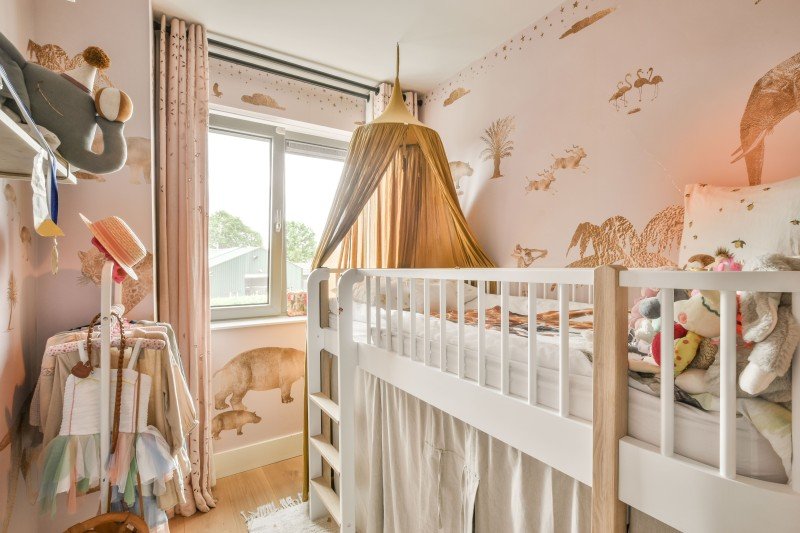The Ultimate Guide to Bunk Beds for Children: Safety, Styles, and Benefits
When it pertains to styling a kid's space, parents frequently face the dual difficulty of maximizing space while guaranteeing convenience and performance. Bunk beds have actually emerged as a popular option that resolves these needs, providing not just sleeping plans however also adding to a room's aesthetic. In this detailed guide, we will explore various elements of kids's bunk beds, focusing on their advantages, security features, designs, and factors to consider for parents pondering this purchase.
Tabulation
- Advantages of Bunk Beds
- Security Features to Consider
- Types of Bunk Beds
- Design and Style Options
- Maintenance Tips
- Often Asked Questions (FAQs)
1. Benefits of Bunk Beds
Bunk beds use many advantages for kids and their parents. Here are some essential benefits:
- Space-Efficiency: Bunk beds are an exceptional option for smaller sized rooms. By stacking one bed on top of another, more floor space is available for play, storage, or study locations.
- Affordable: When kids share rooms, bunk beds can minimize the need for purchasing two different beds, therefore saving cash.
- Cultivates Social Interaction: Bunk beds can help brother or sisters or buddies bond by sharing a space, creating opportunities for social advancement.
- Fun Factor: The idea of sleeping "up high" includes a spirited element to bedtime, making the shift to sleeping alone much easier for some children.
- Versatile Design: Bunk beds are available in different styles, colors, and develops to match any space theme, permitting for customization that shows the child's character.
2. Safety Features to Consider
Safety is vital when it comes to children's furniture, specifically in the case of bunk beds. Here are some crucial safety features to evaluate:
| Safety Feature | Description |
|---|---|
| Sturdy Construction | Frames made of strong wood or metal are chosen. |
| Guardrails | Should be at least 5 inches high and extend along both sides of the upper bunk. |
| Ladder Design | Make sure ladders are firmly connected and have non-slip steps. |
| Mattress Size & & Fit | Must fit comfortably within the frame to prevent gaps. |
| Weight Limit | Constantly follow the producer's weight limit recommendations. |
3. Types of Bunk Beds
Bunk beds are available in several styles, dealing with numerous needs, choices, and room sizes. Here are some typical types:
- Standard Bunk Bed: The most fundamental type, with one bed on top of another.
- Loft Bed: Features a high upper bed with space below for a desk or play area.
- Futon Bunk Bed: Combines a top bunk with a futon on the bottom, providing flexibility for seating and sleeping.
- L-Shaped Bunk Bed: This design has the leading bunk set at a perpendicular angle to the bottom, creating a little corner location.
- Triple Bunk Bed: Accommodates three kids using stacked beds, ideal for large families or slumber parties.
4. Style and Style Options
When it pertains to selecting a design for children's bunk beds, the options are virtually endless. Here are some popular designs:
- Traditional Style: Often made of wood, these bunk beds feature ornate information and are best for classic or rustic-themed rooms.
- Modern Style: Characterized by clean lines and minimalist styles, modern-day bunk beds can be made of metal or wood.
- Themed Bunk Beds: Some brand names provide bunk beds formed like castles, cars and trucks, or play houses, making bedtime less of a task.
- Convertible Bunk Beds: These can be separated into two individual beds, providing versatility as children grow.
- Colorful Options: Bunk beds in dynamic colors can include a sense of delight and playfulness to any room.
5. Maintenance Tips
Maintaining a bunk bed is vital for durability and safety. Here are some pointers:
- Regular Inspections: Check for loose screws or bolts every couple of months and tighten them as needed.
- Cleaning up: Wipe down frames frequently to avoid dust build-up; think about using a vacuum for hard-to-reach locations.
- Mattress Care: Rotate mattresses routinely and utilize protective covers to prolong their life.
- Enjoy for Wear and Tear: Look for any signs of damage in the wood or metal and consider replacing parts if essential.
- Teach Kids Safety Rules: Encourage children to use ladders properly and guarantee they comprehend the security functions of their bed.
6. Often Asked Questions (FAQs)
Q1: What age is proper for sleeping in a leading bunk?
A1: Typically, children aged 6 and older are advised for upper bunk sleeping, as they have the essential motor skills to climb securely.
Q2: Do bunk beds include a bed mattress?
A2: Most bunk beds are sold as frames just, so you will need to purchase mattresses individually. Sale On Bunk Beds that the bed mattress fits the frame comfortably.
Q3: Can bunk beds be separated later?
A3: Many styles permit conversion into two specific beds, supplying versatility for future requirements.
Q4: How can I guarantee my kid's safety on a bunk bed?
A4: Comply with security standards and ensure guardrails, a durable frame, and a secured ladder remain in location.
Q5: Are there weight limits on bunk beds?
A5: Yes, always inspect the manufacturer's requirements concerning weight limitations to guarantee security.
Bunk beds for kids can serve numerous purposes while making sure safety and style. With varied designs and designs offered on the market, moms and dads can find an unit that not only optimizes bed room space but also reflects their child's distinct tastes. Just like any furniture, understanding safety functions, maintenance, and how they fit into a child's lifestyle will make sure that these beds stay a practical furnishings option for years to come.
Through mindful factor to consider and adherence to security standards, bunk beds can offer a long-lasting, fun, and practical sleeping solution that kids enjoy.

